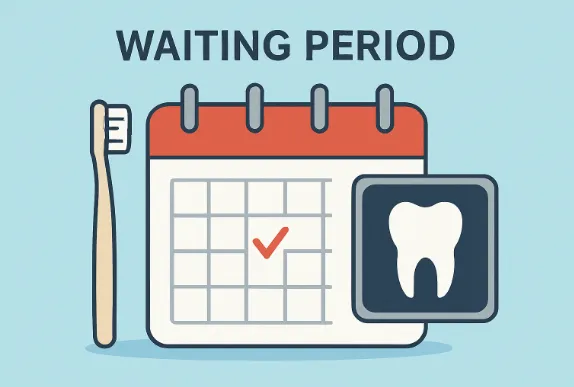Trying to make sense of dental insurance can be as confusing as learning a new language. If you’ve ever found yourself overwhelmed by jargon or unsure how your benefits actually work, you’re not alone. Common terms like “waiting periods,” “coverage limits,” and “preventive benefits” often leave policyholders wondering what’s truly covered. If you want clear, straightforward answers and a user-friendly dental insurance experience in Alabama, https://www1.deltadentalins.com/areas-we-serve/alabama.html is a helpful resource for exploring plan options and finding clarity.
Dental insurance isn’t just about covering emergencies—it’s also your partner in maintaining lifelong oral health. While preventive care can help you avoid major expenses down the line, understanding how waiting periods and annual maximums work is essential for making the most of your coverage. By grasping these concepts now, you can make informed choices, plan treatments more effectively, and reduce the risk of surprise out-of-pocket costs.
Understanding Waiting Periods
A waiting period is the span of time that must pass after you enroll in a dental insurance plan before certain benefits become available. For instance, while exams and regular cleanings may be covered right away, more costly services like crowns, root canals, or dentures often require a waiting period of several months. This approach helps insurers limit immediate, high-cost claims and maintain reasonable premiums. Knowing about these waiting times is crucial—especially if you’re considering dental work soon after joining a plan.
Waiting periods are typically divided by service type. Preventive care may be available instantly, while basic restorative work might come with a three- to six-month wait. Major procedures could have a waiting period of 12 months. Make sure to review your policy’s specifics or call your insurer so you can set realistic expectations about the treatments you’ll be able to receive and when.
Decoding Coverage Limits
Every dental insurance plan has coverage limits, also known as annual maximums. This is the cap on how much your insurance will pay each year for dental treatments. Many plans, even today, set these limits around $1,000 to $2,000—levels that have remained largely unchanged for decades, despite rising dental care costs. Once you reach this ceiling, any additional dental expenses are your responsibility until your coverage resets the following year.
Understanding coverage limits is particularly important if you anticipate several dental procedures within a year. Strategic planning, such as spreading costly treatments over two benefit years or prioritizing preventive visits, can help you maximize your coverage and minimize out-of-pocket spending. For even deeper insights on how annual maximums are structured and how to budget for dental care, the American Dental Association offers helpful guidance.
The Importance of Preventive Benefits
Preventive benefits are at the heart of most dental insurance plans. These are services that help you avoid bigger, more expensive dental problems later—things like cleanings, exams, sealants, and bitewing X-rays. Most plans cover preventive care at 100%, and often these services don’t count against your annual maximum. This means you can keep your oral health in top shape with minimal cost, while reducing your risk for cavities, gum disease, and other serious issues.
Taking full advantage of preventive benefits is one of the savviest things you can do. Regular cleanings and exams allow your dentist to detect problems early—often before they become painful or expensive to fix. By scheduling these appointments promptly, you not only support your health but also ensure you’re getting the most value from your dental insurance plan.
Common Misconceptions About Dental Insurance
Many people mistakenly believe dental insurance works just like health insurance, expecting it to cover most of the cost of every procedure. In reality, dental insurance is structured more like a savings plan with a coupon attached. Each category of service—preventive, basic, and major—usually has different coverage percentages, and your annual maximum can be exhausted quickly if major work is required.
A dental hygienist once described dental insurance as “just a coupon,” meaning that for fillings, root canals, and other procedures, you might only receive partial coverage after a waiting period and up to your annual limit. This distinction is important when planning care, as it sets realistic expectations and helps avoid billing surprises. For further reading on the differences between medical and dental insurance, Consumer Reports offers an in-depth look at dental coverage structures.
Tips for Maximizing Your Dental Insurance
- Know Your Plan: Familiarize yourself with all the details—waiting periods, annual maximums, and which services are classed as preventive.
- Schedule Regular Check-Ups: Use your fully covered preventive appointments to maintain your oral health and catch issues before they escalate.
- Plan Major Procedures Strategically: If possible, split expensive treatments between calendar years to maximize benefit payouts and avoid hitting the annual limit.
- Stay In-Network: Opt for dentists in your insurance network. These providers have negotiated fees with the insurer, which can significantly lower your out-of-pocket costs.
- Communicate with Your Dentist: Ask for a treatment plan estimate before proceeding. This gives you a clear picture of what’s covered, what isn’t, and helps to avoid surprises.
Conclusion
Making sense of dental insurance—especially terms like waiting periods, coverage limits, and preventive benefits—can help you get the most from your plan and keep your smile healthy. By knowing the key concepts, timing procedures thoughtfully, and utilizing available preventive services, you can reduce costs and enjoy better dental health. If you need help finding the right coverage or want more details, resources are available to help you make the best choice for your needs.



